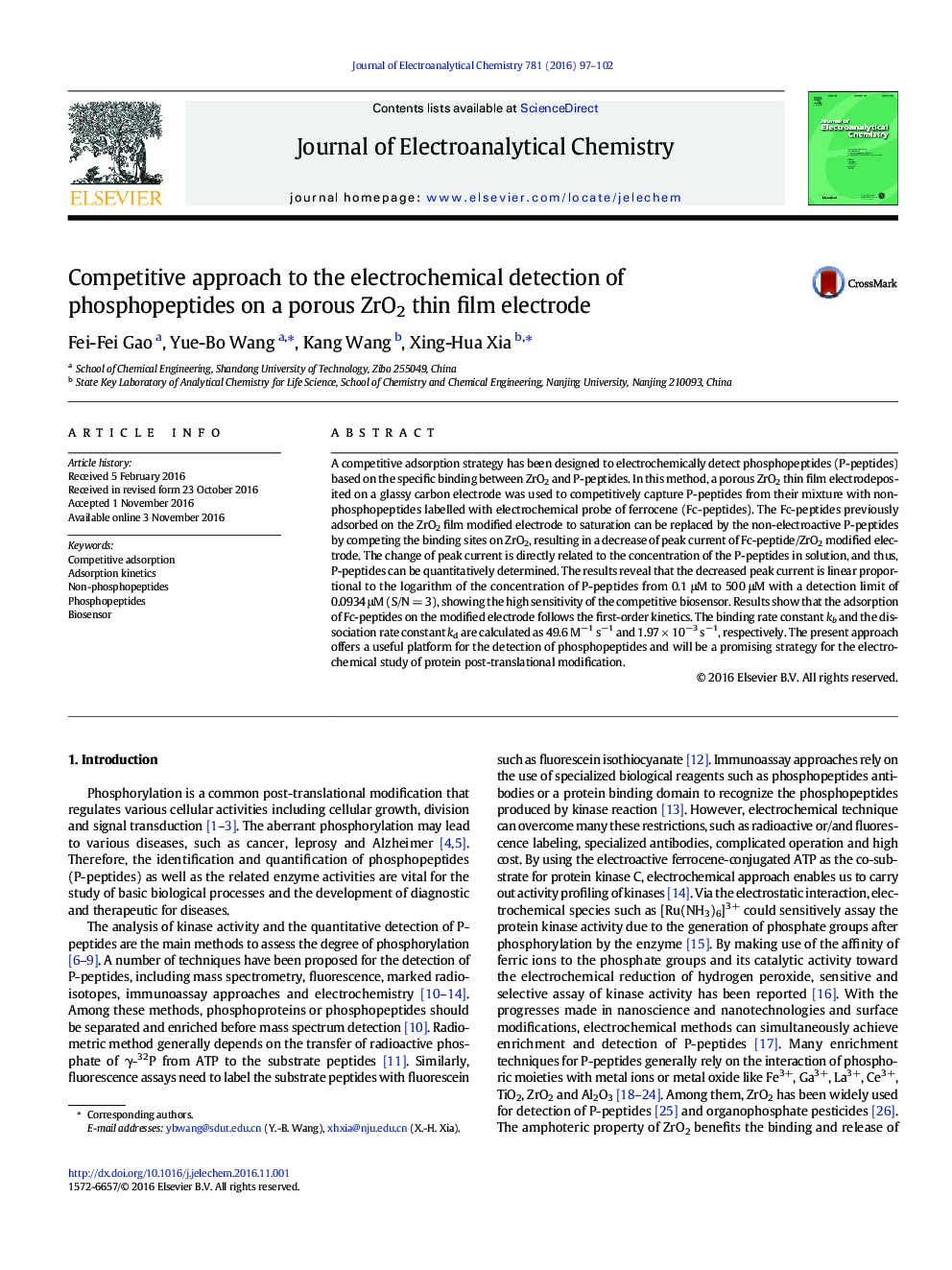| Article ID | Journal | Published Year | Pages | File Type |
|---|---|---|---|---|
| 4908146 | Journal of Electroanalytical Chemistry | 2016 | 6 Pages |
â¢Porous ZrO2 thin film modified glassy carbon electrode was prepared using the hydrogen bubble template.â¢A competitive adsorption strategy has been designed to electrochemically detect phosphopeptides.â¢P-peptides could replace the adsorbed electroactive Fc-peptides, showing decreased current.â¢The present approach offers a useful platform for the detection of phosphopeptides.
A competitive adsorption strategy has been designed to electrochemically detect phosphopeptides (P-peptides) based on the specific binding between ZrO2 and P-peptides. In this method, a porous ZrO2 thin film electrodeposited on a glassy carbon electrode was used to competitively capture P-peptides from their mixture with non-phosphopeptides labelled with electrochemical probe of ferrocene (Fc-peptides). The Fc-peptides previously adsorbed on the ZrO2 film modified electrode to saturation can be replaced by the non-electroactive P-peptides by competing the binding sites on ZrO2, resulting in a decrease of peak current of Fc-peptide/ZrO2 modified electrode. The change of peak current is directly related to the concentration of the P-peptides in solution, and thus, P-peptides can be quantitatively determined. The results reveal that the decreased peak current is linear proportional to the logarithm of the concentration of P-peptides from 0.1 μM to 500 μM with a detection limit of 0.0934 μM (S/N = 3), showing the high sensitivity of the competitive biosensor. Results show that the adsorption of Fc-peptides on the modified electrode follows the first-order kinetics. The binding rate constant kb and the dissociation rate constant kd are calculated as 49.6 Mâ1 sâ1 and 1.97 Ã 10â3 sâ1, respectively. The present approach offers a useful platform for the detection of phosphopeptides and will be a promising strategy for the electrochemical study of protein post-translational modification.
Graphical abstractA competitive adsorption strategy has been designed to electrochemically detect phosphopeptides (P-peptides) based on the specific binding between ZrO2 and P-peptides. P-peptides could replace the electroactive Fc-peptides previously adsorbed on the modified electrode. The results reveal that the decreased peak current is linear proportional to the logarithm of the concentration of P-peptides.Download high-res image (132KB)Download full-size image
